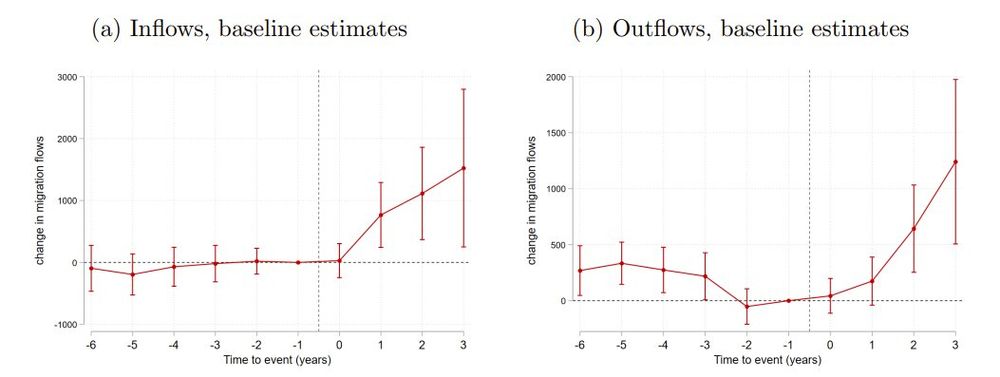
https://sites.google.com/view/mariabalgova
Also, many interesting related questions: is the quality of match & wages lower/higher with no relocation necessary? How much do firms take advantage of recruiting from anywhere?
Also, many interesting related questions: is the quality of match & wages lower/higher with no relocation necessary? How much do firms take advantage of recruiting from anywhere?
However, in the presence of search frictions, I wouldn't expect workers to be paid their marginal product anyway...
2/2
However, in the presence of search frictions, I wouldn't expect workers to be paid their marginal product anyway...
2/2
- within occup, higher wages reflect better matches (wage = worker qual + firm qual + match qual)
- cost of firing (as you say)
- cost of worker relocation only pays back for high wage jobs
1/2
- within occup, higher wages reflect better matches (wage = worker qual + firm qual + match qual)
- cost of firing (as you say)
- cost of worker relocation only pays back for high wage jobs
1/2
If you want to learn more, including what Kijiji is, full paper available here: mariabalgova.github.io/JMP.pdf
If you want to learn more, including what Kijiji is, full paper available here: mariabalgova.github.io/JMP.pdf
Ofc, hiring online today looks very different, with AI helping to pick best candidates and guide job search...
Ofc, hiring online today looks very different, with AI helping to pick best candidates and guide job search...
I find that this is true for Craigslist cities but not for control cities, where the relationship is negative - driven by labour supply rather than by better matching.

I find that this is true for Craigslist cities but not for control cities, where the relationship is negative - driven by labour supply rather than by better matching.
(i) Craigslist to have larger impact in occupations with high non-local recruitment in 1990
(ii) the impact to be larger for higher wages where the quality of match often matters most
This is exactly what I find!


(i) Craigslist to have larger impact in occupations with high non-local recruitment in 1990
(ii) the impact to be larger for higher wages where the quality of match often matters most
This is exactly what I find!
- non-local vacancies are posted in large markets with higher wages & lower-unemployment
- firms target markets which specialise in the occupation they’re searching for


- non-local vacancies are posted in large markets with higher wages & lower-unemployment
- firms target markets which specialise in the occupation they’re searching for
Because firms had to make conscious choice about which newspaper to advertise in, this data uniquely captures which jobs were posted non-locally and why.
Because firms had to make conscious choice about which newspaper to advertise in, this data uniquely captures which jobs were posted non-locally and why.
However, without any data on firm recruitment, it's hard to identify what drives these results.
For all we know, the migration and wage effects might be caused by different mechanisms!
However, without any data on firm recruitment, it's hard to identify what drives these results.
For all we know, the migration and wage effects might be caused by different mechanisms!

Looking at changes in bilateral city-to-city migration flows, almost all of the increase in migration churn is driven by greater mobility between Craigslist cities.


Looking at changes in bilateral city-to-city migration flows, almost all of the increase in migration churn is driven by greater mobility between Craigslist cities.
My solution: focus on the staggered rollout of one of the first online job boards, Craigslist, across US cities.
My solution: focus on the staggered rollout of one of the first online job boards, Craigslist, across US cities.
However, internet also kills distance --> should make it easier for firms and workers to match *between* markets.
My paper is the first to explore this channel empirically.
However, internet also kills distance --> should make it easier for firms and workers to match *between* markets.
My paper is the first to explore this channel empirically.

